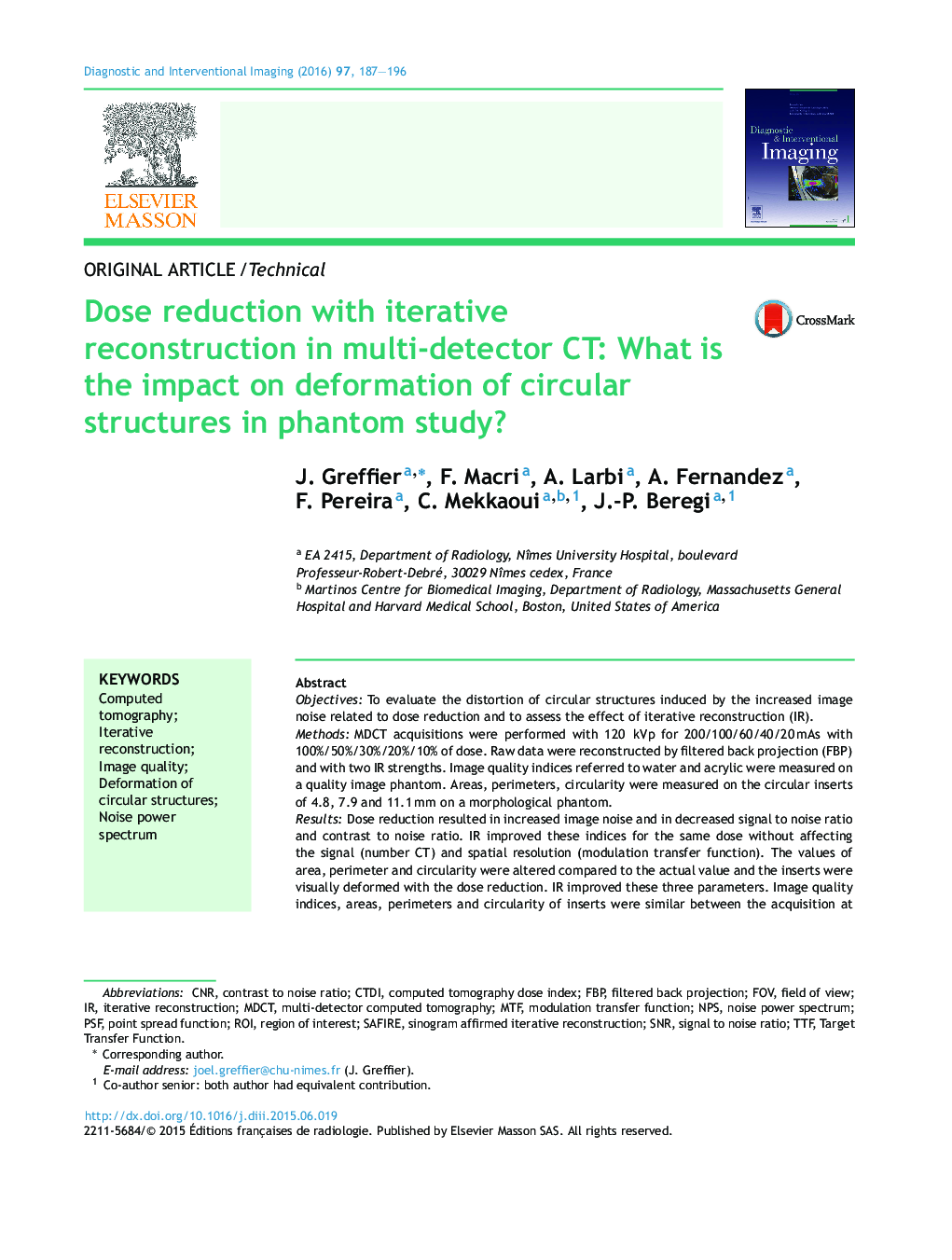| Article ID | Journal | Published Year | Pages | File Type |
|---|---|---|---|---|
| 2733578 | Diagnostic and Interventional Imaging | 2016 | 10 Pages |
ObjectivesTo evaluate the distortion of circular structures induced by the increased image noise related to dose reduction and to assess the effect of iterative reconstruction (IR).MethodsMDCT acquisitions were performed with 120 kVp for 200/100/60/40/20 mAs with 100%/50%/30%/20%/10% of dose. Raw data were reconstructed by filtered back projection (FBP) and with two IR strengths. Image quality indices referred to water and acrylic were measured on a quality image phantom. Areas, perimeters, circularity were measured on the circular inserts of 4.8, 7.9 and 11.1 mm on a morphological phantom.ResultsDose reduction resulted in increased image noise and in decreased signal to noise ratio and contrast to noise ratio. IR improved these indices for the same dose without affecting the signal (number CT) and spatial resolution (modulation transfer function). The values of area, perimeter and circularity were altered compared to the actual value and the inserts were visually deformed with the dose reduction. IR improved these three parameters. Image quality indices, areas, perimeters and circularity of inserts were similar between the acquisition at 100% of the dose in FBP, 50% in strength-3 and 30% in strength-5 with different curves of noise power spectrum.ConclusionIR associated to 70% of dose reduction modifies the images smooth (NPS) but maintains adequate image quality indices without causing distortions of circular structures.
